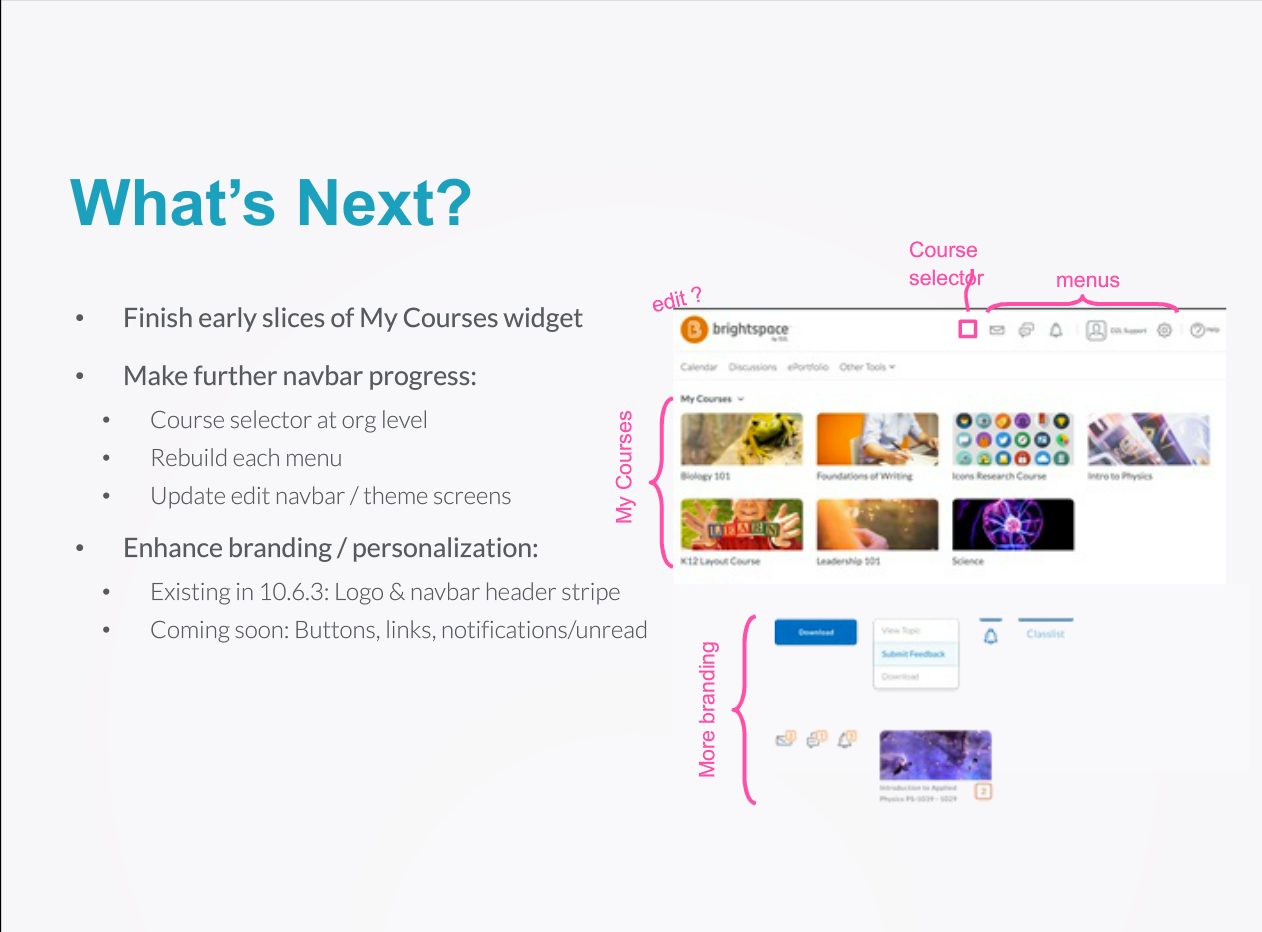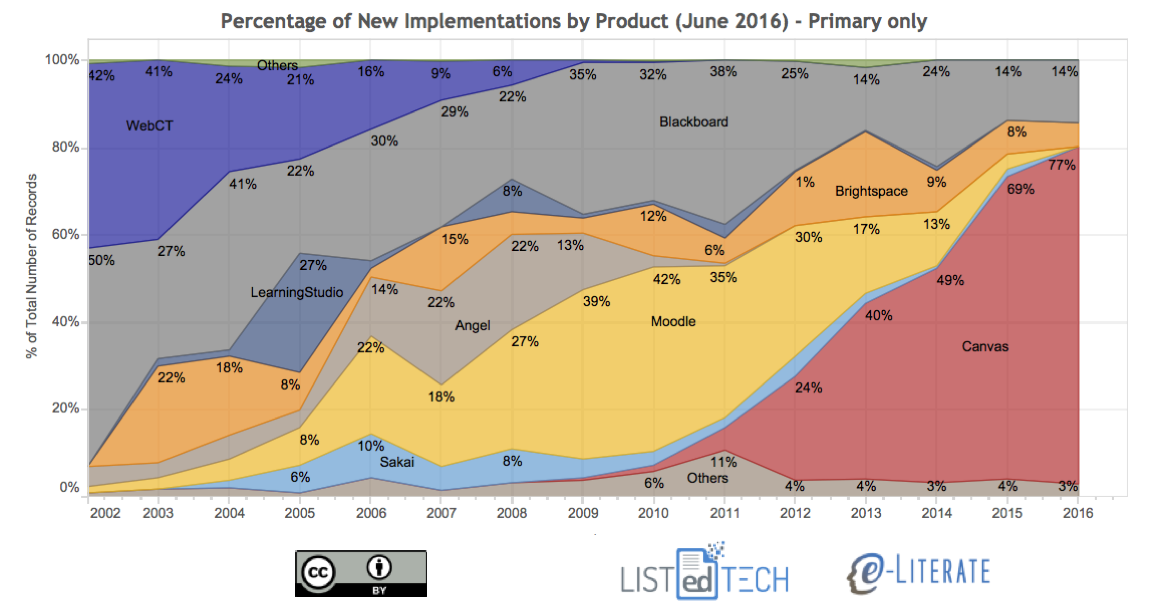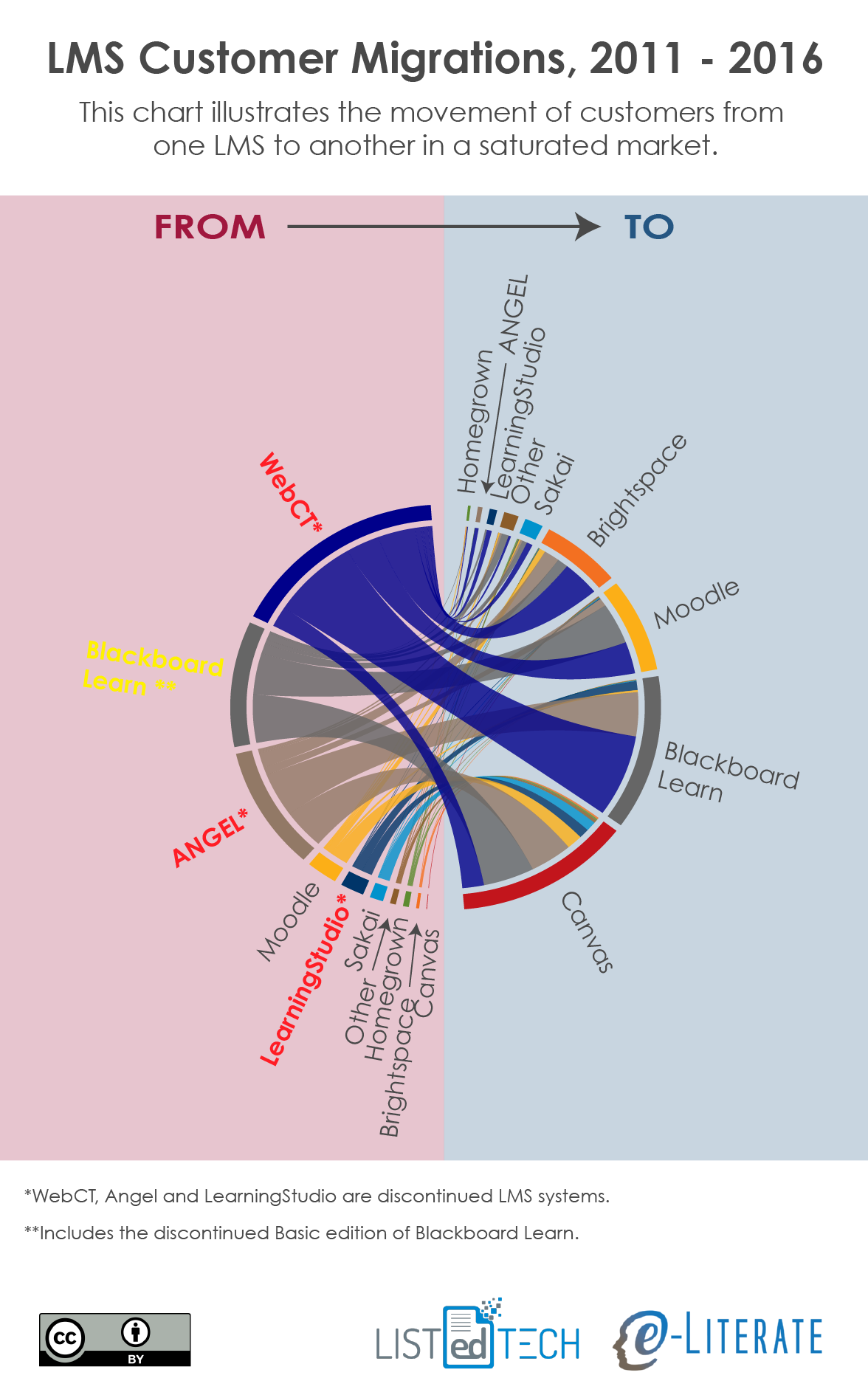As I have described to several executives at D2L, there is an interesting gap between the progress we have seen with the company’s product improvements and the reaction we hear from many of their customers. With the tighter integration with LeaP and the improved usability, particularly in content authoring, I would have expected to hear more customers react to the changes. But when talking directly to many of the institutions using the Brightspace LMS, staff describe D2L as if the company and product line had not changed in several years. What is not clear is whether this gap is due the company missing the mark (and my judgement of improvements not aligning with what colleges and universities want) or whether there is just a lag where it will take time for most customers to believe in and take advantage the new product designs and features.
2016 has been an eventful year for D2L. COO Cheryl Ainoa, a longtime veteran of Yahoo! and most recently Intuit, joined the company in April. Although this move was not advertised through press releases or even blog posts, I believe this is a significant change to how the company operates. This is not the first time that D2L has reached outside the industry for a top executive, as they employed Dennis Kavelman from RIM / Blackberry as COO from 2012 – 2014 (the period where D2L raised $165 million in two mammoth funding rounds). But I have heard that the addition of Ainoa has already seen results internally. And in the ‘keeping work in perspective’ category, founder and CEO John Baker and his wife had their first child right before the Fusion Users Conference.
Product
On the product front, D2L has positioned itself to offer as many leading features within the LMS as possible. While the company has been quite active with IMS Global to work on interoperability standards, it appears that in their hearts D2L would prefer to have users stay within the LMS. They have added their own adaptive learning software through the acquisition of Knowillage (now known as LeaP), although LeaP still integrates with most other LMSs. They have added many features to enable Competency-Based Education, including automation of feedback and automatic triggers for next steps, to a greater degree than most of their competitors.
More recently D2L has started to introduce the Daylight Experience, meant to upgrade the user experience of faculty and students using Brightspace. Daylight has started to roll out this summer with the goals of providing a great first impression, enable responsive design, and simplifying the visual design. Below is a view of what’s next as Daylight applies to Brightspace.

From the demos I’ve seen, D2L has made the biggest usability improvements to the system in terms of course design, allowing drag-and-drop, and simplified workflows. The primary features of the Brightspace LMS (and LeaP adaptive platform) that D2L is emphasizing are those that enable personalized learning and competency-based education. For a view of Daylight changes to the LMS, see the Fusion (D2L users conference) keynote starting at 12:30; for more of the view of outcomes / CBE features in the LMS, see keynote starting at 39:56.
Market Position
On the sales front, D2L has experienced somewhat slow but steady growth in new US / Canadian higher education clients as seen below, but they have not had the big-name wins of the caliber of UMUC1, Tennessee Board of Regents, University System of Georgia, as they had 2013 and earlier. This year, however, D2L’s Brightspace has been selected at Kaplan University for higher ed, and Florida Virtual School, K12 Inc, and the State of New Mexico for K-12. It is worth noting that for the recent wins, the client (or D2L, these are press releases after all) chose to make the personalized learning aspect of Brightspace a key differentiator.

D2L has made an aggressive effort to win those schools such as Kaplan that are forced to migrate from Pearson’s LearningStudio due to that system’s end-of-life notice earlier this year. In fact, Pearson and D2L have partnered by a preferred vendor arrangement that has helped Texas Christian University, Saint Leo University and several others choose to migrate to Brightspace.
Brightspace is the recommended LMS for Pearson LearningStudio customers, who consist of institutions with full or partial online programs and who were notified of Pearson’s plan to retire the Pearson LearningStudio platform.
At the same time, D2L has long had a reputation for strong customer retention, keeping 98 – 99% of their clients each year. There have been client losses, primarily to Canvas (San Jose State University, for example), but not that many of them. See the very bottom of this chart for comparative size of D2L migrations away from their LMS.

While D2L has had some big wins this year, they also face some big losses (partially due to Unizin). The University of Iowa, Ohio State University, the University of Oklahoma and the University of Wisconsin Madison have all decided within the past year to migrate to Canvas. That last one is very significant, as the University System of Wisconsin was the key win that put D2L on the map as a major contender in the LMS market in 2002. Note that only UW Madison has made decision to migrate – not the entire system. We have not yet seen a significant change in market data in our LMS subscription service data, but these specific accounts – both wins and losses – could indicate upcoming market share changes.
And this gets back to the gap noted in the first paragraph. When I talk to people at schools migrating from D2L or considering whether to migrate, I do not hear much about the recent product changes or the new management described above. For several of these schools, the issue isn’t even whether they like or dislike the recent product and management changes, it’s as if these changes are a non issue in their decision-making. No conclusions yet, just noting the gap.
Why Second-Hand?
The reason I titled this post as a second-hand view is that D2L is the only major LMS provider (and I include Moodle and Sakai here) that discouraged our participation in their users conference (and we did not attend), citing concerns over direct conversations with attendees without getting their permission first. Other providers are happy to allow and even encourage this type of interaction. In the nature of full disclosure, we think it is important for the reader to understand this difference in access.
Michael and I value the ability to not just hear official presentations and get in-depth demos, but to also go, roam, and talk to customers. D2L staff did go out of their way to provide demos and to have knowledgeable staff available on the calls, but this is different than hearing from colleges and universities about their experience and judgement. We do have other tools at our disposal, including our consulting work for schools, but we’re limited in what we can do with that information due to confidentiality agreements. We also get unsolicited reports from LMS customers, but those tend to skew towards the negative as people are more inclined to share bad experiences than good. And of course we do a lot of online secondary research, including analysis of social media posts.
I will note that I heard that the Fusion users conference reaction seemed very positive. One source in particular noted a lot of energy in the hall and positive reception to the announced changes to the product line, to the point where they were very surprised by what they were seeing (had not expected to be impressed).
Nevertheless, while we are seeing and reporting on some positive developments with D2L, our confidence in how well those changes are actually impacting real customers is limited. General feedback from the conference seemed to be positive, but individual conversations with several schools paints a different picture. So take some of this analysis with a grain of salt. We are working with D2L to improve our ability to benefit from future conferences and get more insight in the future. In the meantime, it will be important to watch and see if D2L can extend some of the bigger higher ed wins for other LearningStudio schools and even beyond, and if D2L can avoid losing more big name accounts.
Update 8/16: Added K12, Inc to list of recent wins. Corrected “University of Oklahoma” even though they abbreviate to OU.
Update 8/17: I had missed the official decision on U Wisconsin Madison migrating to Canvas. Post updated to reflect this decision and context.
- Disclosure: I advised UMUC during their strategy and evaluation process in 2011-2012. [↩]
This is interesting. We have heard the same sort of response from instructors about one of the LMS we deploy. Almost all of them are not at all aware of updates to the LMS over the last year. We often hear them asking for things that are already present. When we do a scan of who is using what we find that pretty much most of the instructors are not using tools and features that are critically important elements in having a quality online learning experience. I could give you a list of reasons why but then this post would be too long….